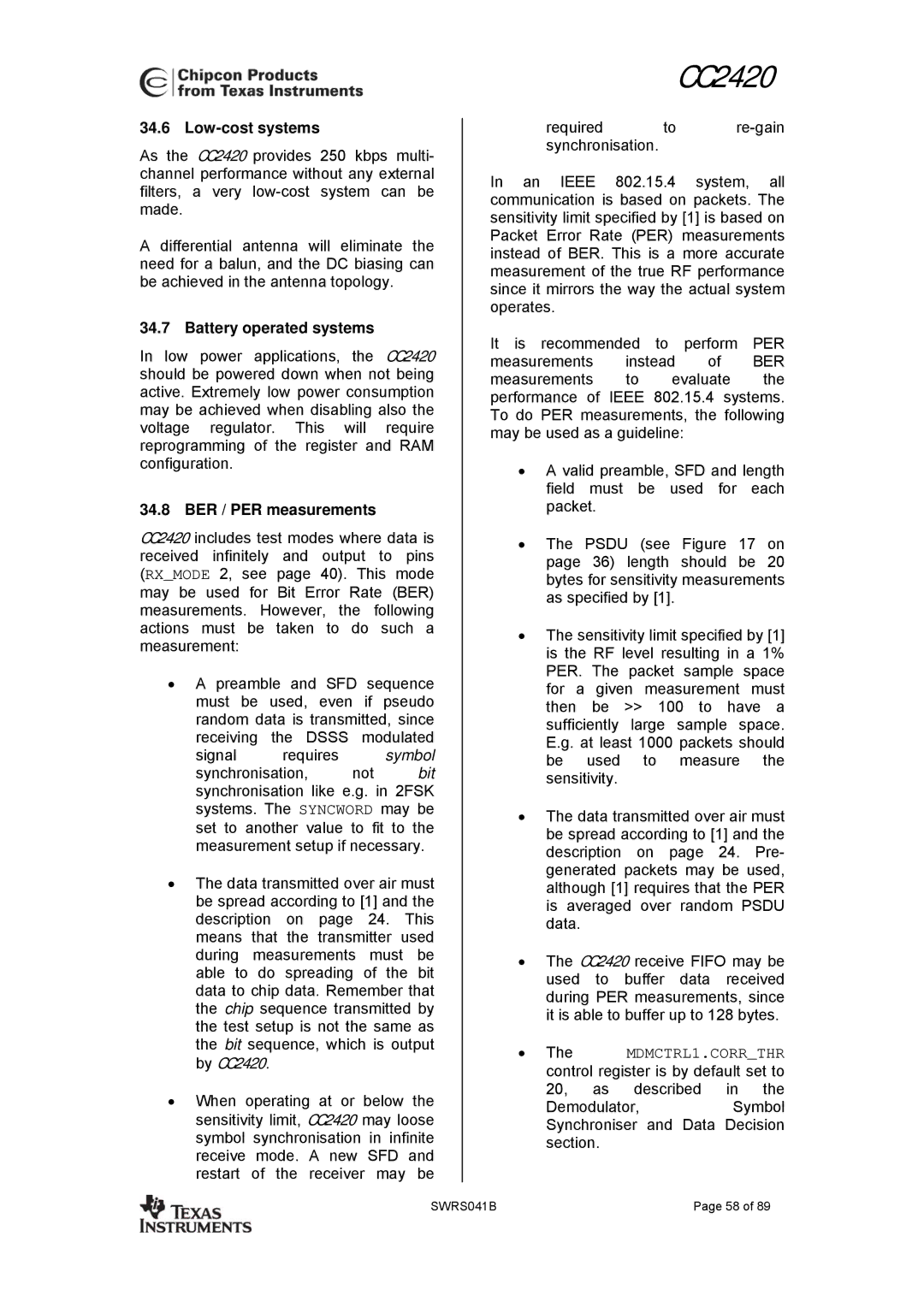
CC2420
34.6 Low-cost systems
As the CC2420 provides 250 kbps multi- channel performance without any external filters, a very
A differential antenna will eliminate the need for a balun, and the DC biasing can be achieved in the antenna topology.
34.7 Battery operated systems
In low power applications, the CC2420 should be powered down when not being active. Extremely low power consumption may be achieved when disabling also the voltage regulator. This will require reprogramming of the register and RAM configuration.
34.8 BER / PER measurements
CC2420 includes test modes where data is received infinitely and output to pins (RX_MODE 2, see page 40). This mode may be used for Bit Error Rate (BER) measurements. However, the following actions must be taken to do such a measurement:
•A preamble and SFD sequence must be used, even if pseudo random data is transmitted, since receiving the DSSS modulated
signal requires symbol
synchronisation, not bit synchronisation like e.g. in 2FSK systems. The SYNCWORD may be set to another value to fit to the measurement setup if necessary.
•The data transmitted over air must be spread according to [1] and the description on page 24. This means that the transmitter used during measurements must be able to do spreading of the bit data to chip data. Remember that the chip sequence transmitted by the test setup is not the same as the bit sequence, which is output by CC2420.
•When operating at or below the sensitivity limit, CC2420 may loose symbol synchronisation in infinite receive mode. A new SFD and restart of the receiver may be
required to
In an IEEE 802.15.4 system, all communication is based on packets. The sensitivity limit specified by [1] is based on Packet Error Rate (PER) measurements instead of BER. This is a more accurate measurement of the true RF performance since it mirrors the way the actual system operates.
It is recommended to perform PER measurements instead of BER
measurements to evaluate the performance of IEEE 802.15.4 systems. To do PER measurements, the following may be used as a guideline:
•A valid preamble, SFD and length field must be used for each packet.
•The PSDU (see Figure 17 on page 36) length should be 20 bytes for sensitivity measurements as specified by [1].
•The sensitivity limit specified by [1] is the RF level resulting in a 1% PER. The packet sample space for a given measurement must then be >> 100 to have a sufficiently large sample space. E.g. at least 1000 packets should be used to measure the sensitivity.
•The data transmitted over air must be spread according to [1] and the description on page 24. Pre- generated packets may be used, although [1] requires that the PER is averaged over random PSDU data.
•The CC2420 receive FIFO may be used to buffer data received during PER measurements, since it is able to buffer up to 128 bytes.
•The MDMCTRL1.CORR_THR control register is by default set to 20, as described in the
Demodulator,Symbol Synchroniser and Data Decision section.
SWRS041B | Page 58 of 89 |
